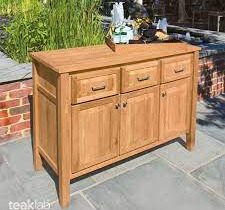Ceiling fans are a great addition to any home, as they not only provide a cool breeze during hot weather but can also help to circulate warm air during colder months. However, with so many different types and styles available, it can be overwhelming to know which one to choose. If you are looking for ceiling fans visit a ceiling fan store near you.
Ceiling fans are an essential component of any home, providing comfort and relief from the heat. However, choosing the right ceiling fan for your home can be a daunting task, with so many different models and options available in the market. Here are some things to consider before buying a ceiling fan:
- Size: The size of the ceiling fan you choose is critical to ensuring that it is both functional and visually appealing. A fan that is too small for the room it is installed in will not circulate air effectively, while a fan that is too large can be overwhelming and take up too much space. As a general rule, rooms up to 75 square feet should have a fan with a blade span of 29 to 36 inches, rooms between 76 and 144 square feet should have a fan with a blade span of 36 to 42 inches, and rooms between 144 and 225 square feet should have a fan with a blade span of 44 to 50 inches.
- Ceiling height: The height of your ceiling is another important factor to consider when selecting a ceiling fan. Rooms with low ceilings will require a fan with a low-profile mount, while rooms with high ceilings will require a fan with a down rod to ensure proper air circulation. As a general rule, fans should be installed with a clearance of at least 7 feet from the floor to the blades.
- Style: Ceiling fans come in a wide range of styles, from traditional to modern, rustic to industrial. Consider the overall decor of your room and choose a fan that complements it. Some fans even come with customizable blade options, allowing you to switch out the blades for a different look.
- Blade pitch: Blade pitch refers to the angle at which the fan blades are set relative to the horizontal plane. A steeper blade pitch will move air more effectively but may also create more noise. Look for fans with a blade pitch of 12 to 15 degrees for optimal performance.
- Motor quality: The motor is the heart of the ceiling fan and is responsible for driving the blades. A high-quality motor will be more efficient, last longer, and provide smoother operation. Look for fans with a motor made of high-quality materials, such as copper or steel.
- Energy efficiency: Ceiling fans can help reduce your energy bills by improving air circulation and reducing the need for air conditioning or heating. Ceiling fans are a cost-effective way to keep your home cool, but they can also add to your energy bill if they consume too much power. Look for a fan with an Energy Star rating to ensure that it is energy efficient. Energy Star-rated fans use up to 60% less energy than conventional fans, making them an excellent choice for environmentally conscious consumers.
- Lighting Options: Ceiling fans with built-in lighting can be a convenient option, especially for smaller rooms. However, you should consider the type of lighting and the brightness level of the bulbs. Some fans may have dimming capabilities or allow you to change the colour temperature of the light.
Conclusion:
In conclusion, buying a ceiling fan is a simple process once you know what to look for. Consider the size of the room, the blade pitch and material, the motor quality, lighting options, energy efficiency, and style and design. By keeping these factors in mind, you can choose a ceiling fan that will provide both comfort and energy savings for years to come.















